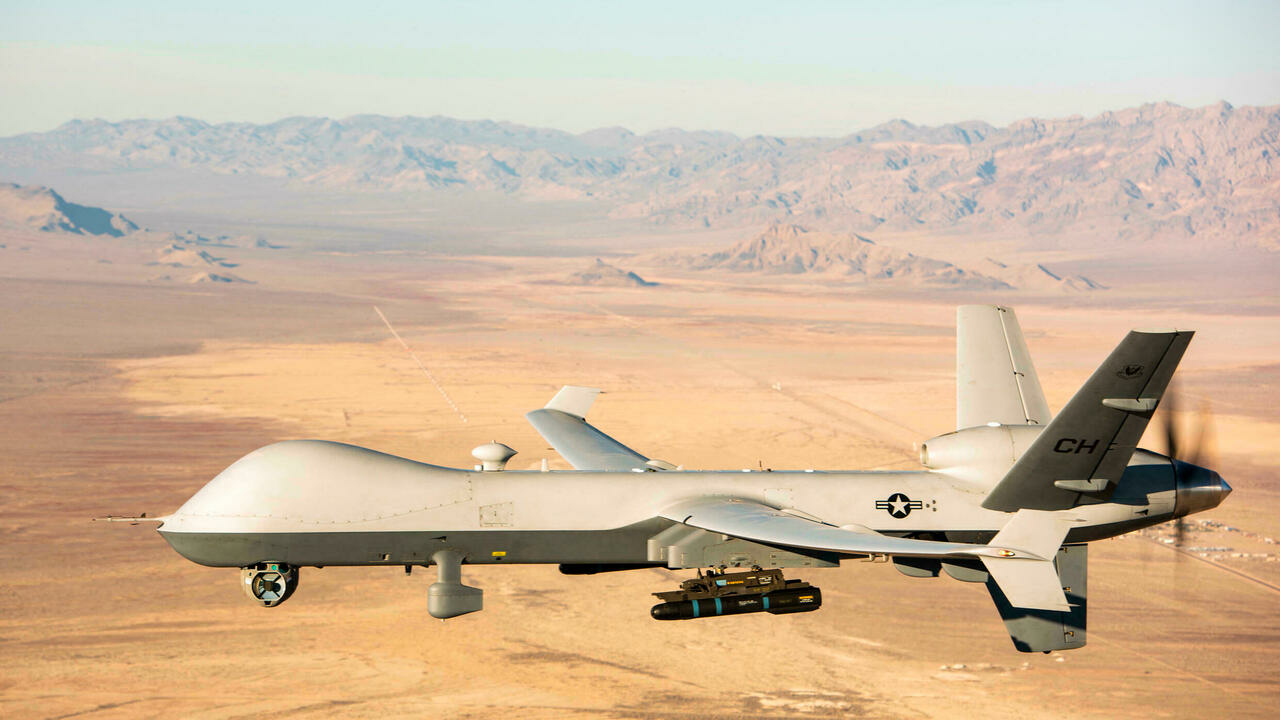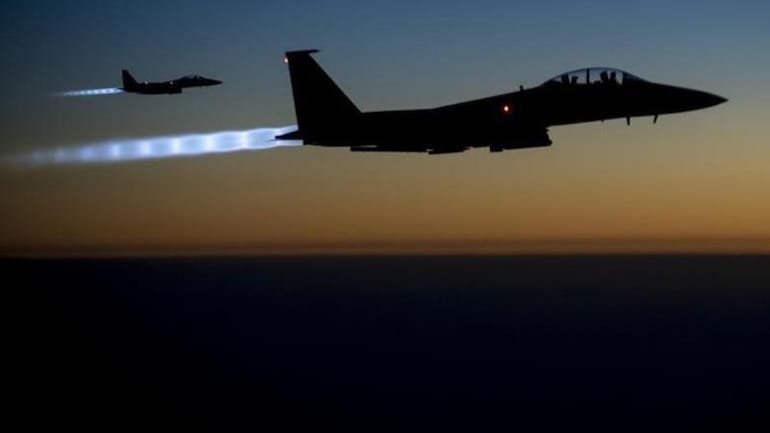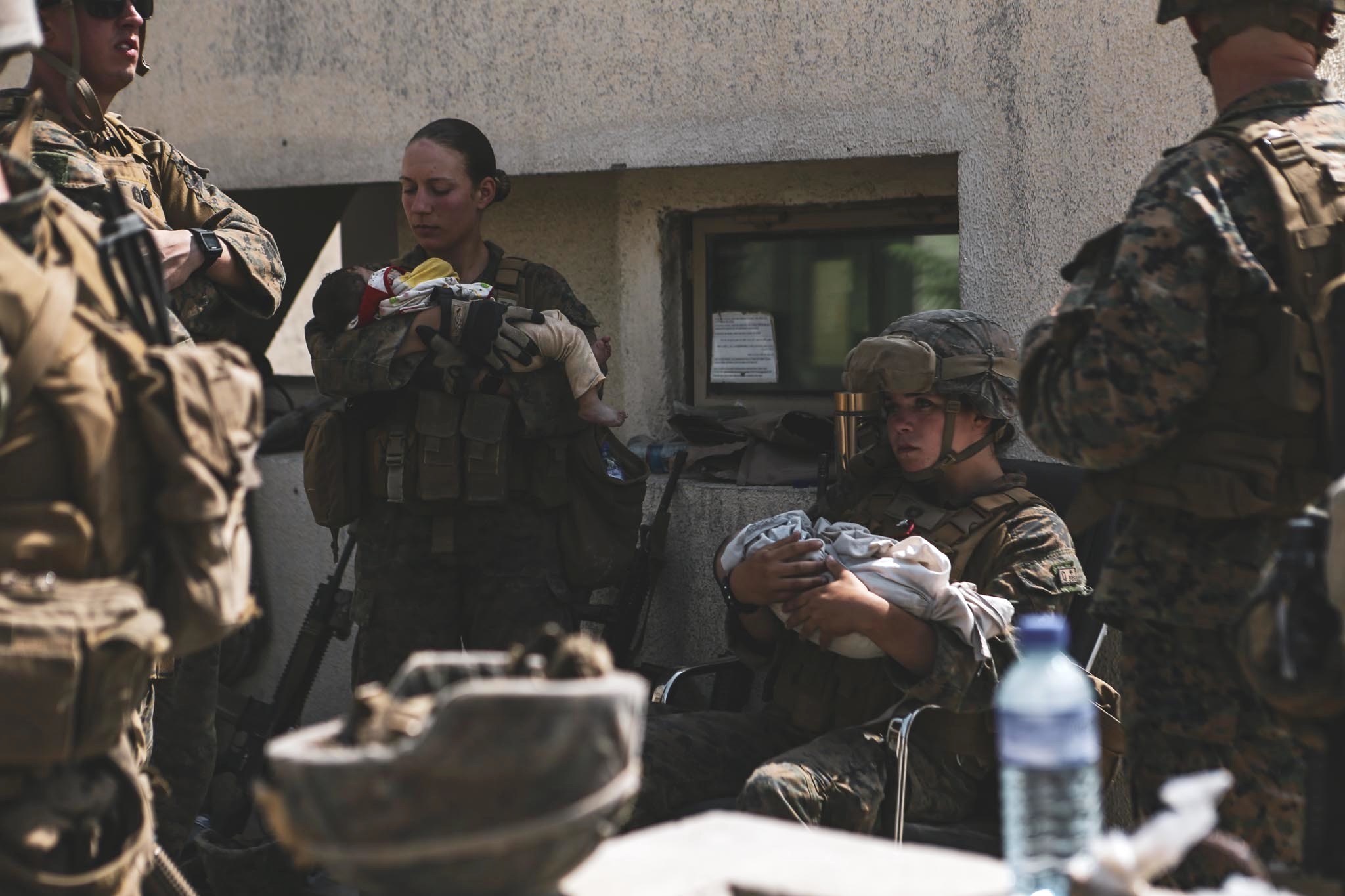In what is said to be the “Biden Doctrine”, US President Joe Biden’s speech on August 31 explaining his decision to withdraw from Afghanistan has revived the debate on one of the important features of modern warfare – “bombs, but no boots”.
US, India Ink Landmark Pact To Develop Next-Gen Drones In A Whopping $20B Overall Military Contract
Role Reversal For F-16 Fighter Jet As US-Origin Attack Aircraft Could Be Used As ‘Drone Bodyguard’ By Turkey
Emphasizing that America’s war on terror will no longer imply its participation in the counter-insurgency efforts and nation-building activities, Biden made it clear that henceforward any help of his country in counterterror operations will only be through air, not on the ground.
“I simply do not believe that the safety and security of America is enhanced by continuing to deploy thousands of American troops and spending billions of dollars a year in Afghanistan. But I also know that the threat from terrorism continues in its pernicious and evil nature. But it’s changed, expanded to other countries. Our strategy has to change, too,” Biden said.

“We will maintain the fight against terrorism in Afghanistan and other countries. We just don’t need to fight a ground war to do it. We have what’s called over-the-horizon capabilities, which means we can strike terrorists and targets without American boots on the ground or very few if needed,” US President added.
Biden then pointed out the efficacy of “over-the-horizon capabilities” in the successful drone- strike in Kabul last fortnight against the ISIS-K, days after the latter murdered 13 US service members and dozens of innocent Afghans.
DECODED: How The US Itself ‘Punctured’ Afghan Military Capabilities To Hand Easy Victory To The Taliban
Air Strikes Are A Routine Affair
But then, air attacks on the opponents have already been in practice by the US military for a long time. Right since the days of President Barak Obama, particularly since 2013, the American public has been told that there will be no combat “boots on the ground” in countries like Iraq, Syria, and Afghanistan.

American troops, it was told, would not be on the frontlines waging the war. Instead, they would concentrate on advising and assisting the local forces, providing training, intelligence, and logistical support from behind the battlefront.
Whether it was Iraq or Syria or Afghanistan, the US military used liberally their space assets for command, control, communications, computers, intelligence, surveillance, and reconnaissance (C4ISR) tasks and control of high-flying UCAVs (drones).
In January 2020, the biggest success of the Americans was that that they used an airborne drone to kill Maj. Gen. Qassim Suleimani, one of the most powerful men in Iran, while he was on Iraqi soil. This was the first time that the US used drones to kill a high-ranking official of a state military; earlier targets were primarily terrorists and insurgents.

The US has carried out thousands of drone strikes in Pakistan, Somalia, Yemen, and Afghanistan. The rate of unmanned strikes increased significantly during the Trump-Presidency. The rationale has been that unmanned systems not only increase combat effectiveness by improving decision-making and targeting accuracy but also give the United States the ability to pursue national security goals without risking the lives of its military personnel.
India-China Row: How An Anglophobic Nazi Helped China Build Its Territorial Claims Against India
Ground Troops Losing Relevance?
All this leads to the question – have the ground forces become increasingly obsolete in modern warfare? Those believing in the importance of “boots on the ground” ridicule such a question. Their counter-question is – has any country, and in this case, it is the US, won any war through “over the horizon means”?
America lost in Afghanistan or for that matter in Syria, they say and quote late American historian and columnist TR Fehrenbach to emphasize: “You may fly over a land forever; you may bomb it, atomize it, and wipe it clean of life – but if you desire to defend it, protect it, and keep it for civilization, you must do this on the ground, the way the Roman Legions did – by putting your soldiers in the mud.”
According to James Wu of King’s College, London, “Every force is specific: specific to the state, time period, theatre etc. Every force is a product of the limitations and the demands of circumstances and context in which it was created and intended to be used.
The utility of that military force depends on the political context in which it is applied, the identification of the target to which it is to be applied, the result that it is intended to achieve, and the nature of the force itself. Different military options offer solutions of varying utility and cost.”

He argues that once the military aim is derived from the political object and articulated through a coherent strategy, then the nature and composition of the military force can be decided upon.
“Boots on the ground might be more suitable for COIN (counterinsurgency) operations; airstrikes can be used effectively to send a message (as the Trump administration did with Syria in 2017). Often both are employed together, as in both Gulf Wars.”
As Taliban Sweeps Afghanistan, Its ‘Department Of Evil’ Sends Shivers Across The Female Subjects
A Mantra, Not A Strategy
James M Dubik, a retired American General is of the opinion that “No Boots on the Ground” may be a “mantra”, but it cannot be a “strategy”, as “ it is problematic from five important perspectives: strategically, operationally, institutionally, historically and morally”.
Strategically, the “no boots on the ground” mantra has three audiences: domestic, international, and enemy. It may satisfy the domestic audience which does not want to spend a nation’s money and lives in wars far from the frontiers.
But internationally, it raises questions in the minds of allies and friends about the US capacity to lead them or come to their rescue. And, it boosts the morale of or emboldens the enemy forces to advance their agenda.
Operationally speaking, “no boots on the ground” mantra limits also the utility of airpower and negates or reduces the capacities of special operations forces. All told, air or drone attacks did not incapacitate the Taliban power, either in Afghanistan or for that matter their safe haven in Pakistan.

Similarly, if air operations in Syria helped anyone, it was none other than President Bashar Hafez al-Assad. In Iraq, though air attacks on the IS troops slowed their advance, they were not deterred from inflicting defeats periodically on the Iraqi army.
From the “institutional perspective”, the mantra feeds disharmony among the US military services. It engenders inter-service rivalry at a time when, for budget reasons, inter-service cooperation is very much needed. It even discourages officers or candidates to join the Army, other active and reserve forces, and in conventional and special operations.
Xi Jinping Wants To Achieve The Ultimate ‘Chinese Dream’; Experts Call It ‘Mission Impossible’
Historically, overreliance on the remote application of force — “a historical American bias” — has not served American interests well, given the experience of the attack on Pearl Harbour in 1941 and the Korean War in the 1950s. Those days too “the opposition to a large army was very widespread and there was a feeling that such an army was passé”.
General Dubik further argues that the mantra reflects a second American constant: the false belief that “we’ll never do that again”—after World War II, never another land war in Asia, but then Korea and Vietnam; after Vietnam, never another nation-building, but then Afghanistan; never another counterinsurgency, but then Colombia, El Salvador, Afghanistan and Iraq; and after the first Gulf War, never another tank battle, but then Iraq. “Reality has a way of imposing itself on biases and false beliefs”, he points out.
Finally, there is the “moral” angle. Without moral limits, war becomes even more horrible and hellish than it already is. A “no boots on the ground” mantra encourages the indiscriminate use of manned or unmanned airpower, putting the innocent at greater risk than the combatants.
Risks Of Collateral Damage
As a survey of the American military personnel not long ago suggests, they are highly concerned that drones, remotely controlled by pilots hundreds of miles from the battlefield, are unable to maintain situational awareness in combat environments and are therefore more likely to make mistakes that could risk-friendly lives.
How relevant is the manta of no boots on the ground for India? Lt Gen (retd) Kuldip Singh, former Director-General, Army Air Defence, says that though events in Iraq and Afghanistan have demonstrated the increasing significance of airpower in modern warfare, airpower itself cannot achieve lasting victory or success without “boots on the ground”.
Secondly, he argues that air war, whether in Iraq or in Afghanistan, should not ignore the fact that it was executed in face of unprecedented asymmetry. The US enjoyed overwhelming air superiority in these countries.
But that cannot be true of India as South Asia is a region of plenty of ballistic missiles, cruise missiles, and UCAVs, with principal adversaries like Pakistan and China also emerging as major players in the fields of missiles and unmanned aerial platforms.
- Author and veteran journalist Prakash Nanda has been commenting on politics, foreign policy on strategic affairs for nearly three decades. A former National Fellow of the Indian Council for Historical Research and recipient of the Seoul Peace Prize Scholarship, he is also a Distinguished Fellow at the Institute of Peace and Conflict Studies. CONTACT: prakash.nanda@hotmail.com
- Follow EurAsian Times on Google News




